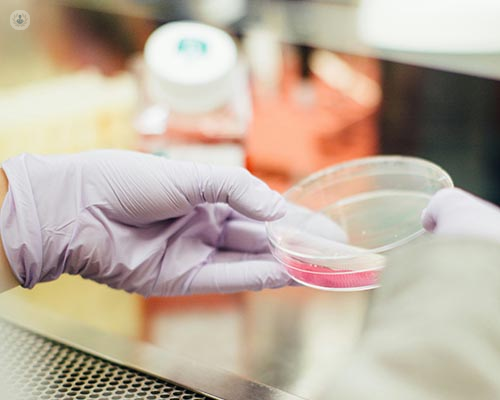5-Hydroxyindoleacetic Acid (5-HIAA)
What is analysed?
5-Hydroxyindoleacetic Acid (5-HIAA) is a metabolite of serotonin, a neurotransmitter involved in mood regulation. The analysis focuses on quantifying the amount of 5-HIAA excreted in urine.

What does the result mean?
The results reflect the levels of 5-HIAA in the body, providing insights into serotonin metabolism. Elevated levels may indicate carcinoid tumours, a type of neuroendocrine tumour.
Why conduct the analysis?
This analysis is crucial for diagnosing and monitoring carcinoid tumours, especially those affecting the gastrointestinal tract, as they often release serotonin.
When to conduct the analysis?
The test is typically ordered when symptoms suggestive of carcinoid tumours are present, such as flushing, diarrhoea, or wheezing. It's also used for monitoring known carcinoid patients.
What sample is required?
A urine sample is collected over a specific period (usually 24 hours) to obtain an accurate representation of 5-HIAA excretion.
Is any prior preparation necessary?
Certain medications and foods can affect 5-HIAA levels. Patients may be advised to avoid serotonin-rich foods like bananas, tomatoes, and certain medications before the test.
How is it performed?
The patient collects a 24-hour urine sample, which is then sent to a laboratory for analysis. High-performance liquid chromatography (HPLC) or mass spectrometry is commonly used for accurate measurement.
What are the normal values?
Normal 5-HIAA levels in a 24-hour urine collection typically range from 2 to 8 mg/day. Deviations from this range may suggest an underlying issue.
What does having altered values mean?
Elevated levels: This may indicate carcinoid tumours, especially in the gastrointestinal tract.
Decreased levels: Uncommon, but could suggest a deficiency in serotonin production.
Interpretation Table:
|
5-HIAA Levels (mg/day) |
Interpretation |
|
2 - 8 |
Normal |
|
> 8 |
Elevated (Possible carcinoid) |
|
< 2 |
Decreased (Uncommon, investigate) |
Understanding 5-HIAA levels is essential for the early detection and management of carcinoid tumours, contributing to better patient outcomes. Always consult with a healthcare professional for a comprehensive interpretation of test results.